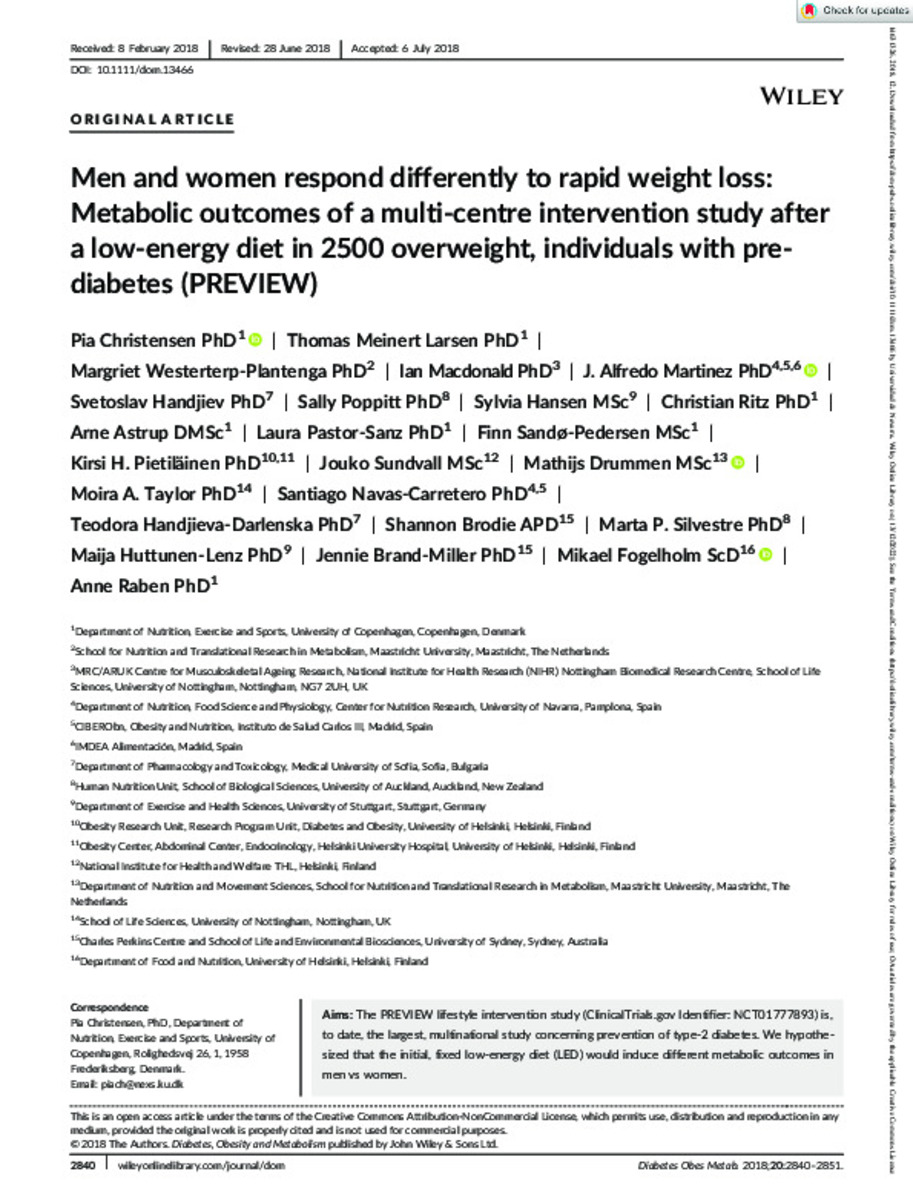Men and women respond differently to rapid weight loss: Metabolic outcomes of a multi-centre intervention study after a low-energy diet in 2500 overweight, individuals with pre-diabetes (PREVIEW)
Palabras clave :
Dietary intervention
Obesity
Prevention
Weight loss
Pre-diabetes
Fecha de publicación :
2018
Nota:
This is an open access article under the terms of the Creative Commons Attribution-NonCommercial License, which permits use, distribution and reproduction in any
medium, provided the original work is properly cited and is not used for commercial purposes.
Cita:
Christensen, P. (Pia); Meinert-Larsen, T. (Thomas); Westerterp-Plantenga, M. (Margriet); et al. "Men and women respond differently to rapid weight loss: Metabolic outcomes of a multi-centre intervention study after a low-energy diet in 2500 overweight, individuals with pre-diabetes (PREVIEW)". Diabetes obesity and metabolism. 20 (12), 2018, 2840 - 2851
Aparece en las colecciones:
Estadísticas e impacto
0 citas en

Los ítems de Dadun están protegidos por copyright, con todos los derechos reservados, a menos que se indique lo contrario.







